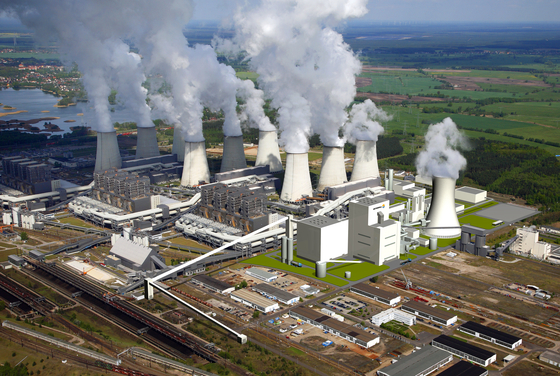
Two Czech billionaires have come up with an unusual way to tap Angela Merkel’s shift toward clean energy: invest in some of Germany’s dirtiest coal-fired power plants and lignite mines.
Petr Kellner, who built the Czech Republic’s biggest fortune on businesses ranging from mobile phones to Russian gold mines, will vie with lignite mining magnate Pavel Tykac for the assets being sold by Sweden’s Vattenfall AB in the German states of Brandenburg and Saxony. Further Czech brown-coal expertise comes with a potential bid from state-owned utility CEZ AS.
The Czech trio, adept at squeezing profits from the cheapest and dirtiest coal, may sense a bargain as the Swedish government, Vattenfall’s only shareholder, pressures the utility to exit the business. They are also betting that Germany’s need for lignite to guarantee energy security for years to come will eclipse concerns over emissions.
“At an attractive price, the business can be interesting for Czechs who are very familiar with Germany and have lignite expertise,” Sven Diermeier, an analyst at Independent Research GmbH, said by phone from Frankfurt. “It may also be a bet on increasing wholesale electricity and coal prices.”
Utilities in Europe’s biggest power market are suffering from the lowest prices since 2002 as the unprecedented shift to renewable energy squeezes margins at coal, gas and nuclear plants. That saw Vattenfall write down its German lignite assets by 15.2 billion Swedish kronor ($1.8 billion) in 2015.
With Vattenfall under pressure to complete the sale of its 8,000-megawatt lignite business by the summer, the bidders may be counting on a knock-down price, said Guido Hoymann, an analyst at B. Metzler Seel Sohn & Co. KGaA in Frankfurt. Vattenfall said last week it will present a possible buyer to the Swedish government during the first half of this year.
The potential for a rebound in electricity rates and the vital role coal still plays in Germany’s energy mix will also prove attractive, said Pawel Smolen, former head of German power-production asset management at Vattenfall.
“The German energy system can’t function without these assets,” said Smolen, a management board member at Polish construction company Erbud SA. “Some of them are brand new, highly efficient plants and will be compensated for their role, so that’s the logic of buyers.”
The energy security represented by lignite makes the business case for the Vattenfall assets even at current prices, said Pavel Cyrani, chief commercial officer at CEZ, which produces almost half of its electricity from brown coal.
Lignite, a sedimentary rock formed from compressed peat, has been a mainstay of German power generation for almost a century and helped underpin growth in Europe’s biggest economy. But reliance on the fuel poses a dilemma: Germany needs to meet its targets for cutting carbon dioxide emissions through a shift to renewable energy, while ensuring stable power supply at times when there’s no sun or wind.
Some analysts question the appeal of the lignite assets as power prices languish near record lows. At current prices near 21 euros ($24) a megawatt hour in Germany, even lignite operations are becoming unprofitable.
“Unless you’re a bull on power prices, I don’t see why one would be buying lignite,” Alberto Ponti, head of European Utilities research at Societe Generale SA, said in a phone interview. “It’s polluting, and there’s a risk of taxation of lignite in Germany.”
Another risk is that Germany could step up its efforts to phase out lignite operations as it tries to cut carbon emissions 55 percent by 2030 from 1990. The official government target for 2035 is for 40 percent to 45 percent of electricity to be generated by conventional fuels, including coal.
Since describing lignite as eastern Germany’s “black gold” two years ago, Merkel’s government has reached a deal with utilities that includes transferring lignite operations to a reserve by 2019, where they’ll be kept offline except to meet emergency power needs.
EP Holding, which has teamed up with Kellner’s PPF Group to bid for the Vattenfall assets, already owns lignite pits and power plants in Germany and has been buying up aging coal assets in the U.K. and Italy.
The investment is “about finding a solution that would be in accord with Germany’s energy policy and at the same time respect the interests of unions, employees and the regions concerned,” said Daniel Castvaj, a spokesman for EPH.
David Vidomus, a spokesman for Tykac’s Czech Coal, a pure lignite player, confirmed the company’s interest in the Swedish utility’s assets. He declined to comment further.
Steag GmbH, Germany’s fifth-biggest power generator, declined to comment on whether it plans to submit a bid for the Vattenfall assets.
CEZ would like clarity on how Germany will use coal as a “bridge technology” during a transition to renewable energy over the coming decades, Cyrani said this week in an interview at the utility’s new power plant at Ledvice in the Czech Republic.
“We won’t buy at any price,” said Cyrani, adding that lignite will probably remain an important part of the Germany’s energy balance for some time. “It’s a domestic energy source, an industry that creates a lot of jobs, so I don’t think a sudden, sweeping decision to scrap it will be made.”
